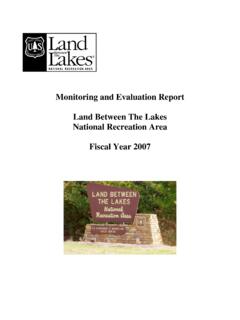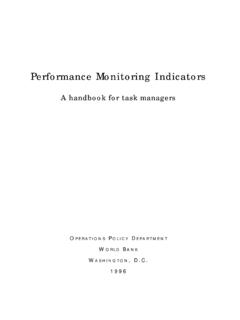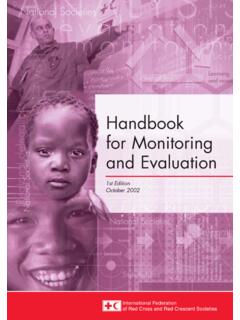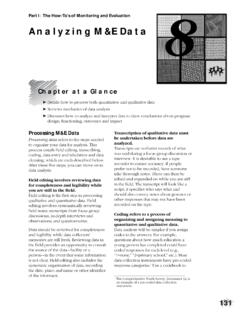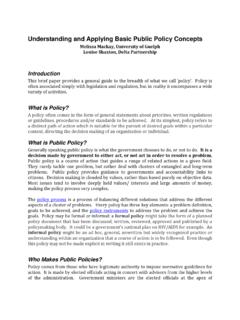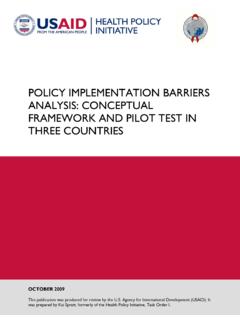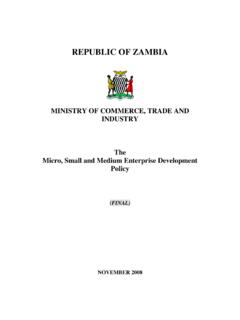Transcription of Problem and Objective Tree Analysis - MEASURE Evaluation
1 Problem and Objective tree Analysis Introduction Problem tree Analysis is central to many forms of project planning and is well developed among development agencies. Problem tree Analysis (sometime called situational Analysis or just Problem Analysis ) helps find solutions by mapping out the anatomy of the Problem . It looks up-stream at causes and determinants and downstream at consequences and effects. This brings several advantages: Real, present issues - rather than apparent, future or past issues are dealt with and identified; The Problem can be broken down into manageable and definable chunks. This enables a clearer prioritisation of which problems or issues are important and this in turn focuses objectives and makes influencing more effective; There is more understanding of the Problem and its often interconnected and even contradictory causes.
2 This is often the first step in finding win-win solutions. It identifies the constituent issues and arguments, and can help establish who are the political actors and processes at each stage; It can help establish what further information, evidence or resources are needed to make a strong case, or build a convincing proposed solution; The process of Analysis often helps build a shared sense of understanding, purpose and action. Detailed Outline of the Process A Problem tree Analysis is carried out in a small focus group (about 6-8) using a flip chart or overhead transparency. The first step is to discuss and agree the Problem or issue to be analysed. This can be quite broad the Problem tree will help break it down or it can be more focused in which case the output will also be more detailed.
3 The Problem might be the result of a brainstorm exercise, or it might be well established and agreed. The Problem or issue is written in the centre of the flip chart and becomes the trunk of the tree . The wording doesn t need to be exact as the roots and branches will further define it, but it should describe an actual, real Problem , and it should be worded so that it is not an absence or lack of something no money!. Focal ProblemEffects CausesNow identify the causes of the focal Problem , then identify the consequences. This should be done on post-its or cards so that, after gathering all the contributions, they can be arranged in a cause-and-effect logic. This can be done realistically, in which case the roots represent the root causes of the Problem and the branches represent the consequences of the Problem .
4 Like real roots and branches they divide and divide again (in this way the Problem tree is similar to a Mind-Map). Discussion questions might include: does this represent the reality? What are the most serious consequences? Which causes are easiest / most difficult to address? What possible solutions might there be? Where could a policy change help address a cause or consequence, or create a solution? Additional questions might include: Are the economic, political and socio-cultural dimensions to the Problem considered? And, considering the dynamics of the Problem , which causes and consequences are getting better, which are getting worse and which are staying the same?
5 The Problem tree is closely linked to the objectives tree , another key tool in the project planners repertoire, and well used by agencies. The Problem tree can be converted into an objectives tree by rephrasing each of the problems into positive desirable conditions - as if the Problem had already been solved and more. Some cards may need to be slightly reworded, and when mapping causes that lead to effects now become means that lead to ends. In this way root causes and consequences are turned into root solutions, and key project or influencing entry points are quickly established. A Good Example Focus groups for designing HIV/AIDS interventions: As part of designing an HIV/AIDS activity in Kenya, a DFID design team needed to have a deeper understanding of various issues and constraints related to the epidemic.
6 Before moving to a large logframe workshop the team decided to conduct focus group interviews with potential target groups and service providers: Through the focus groups the team gained a much deeper understanding of HIV/AIDS-related problems, constraints and opportunities. At the same time, participants in the groups learned much about common problems they themselves were facing and their possible solutions. For example, counselling and testing groups discovered they all faced a critical issue about how to protect the confidentiality of HIV-positive clients. Through the discussion they were able to exchange ideas of how to achieve this. Some had a policy focus and helped understand where changes in government practise and legislation could help.
7 These issues were brought into the logframe workshop, where they were integrated in the design through an activity output dealing with improved counselling and testing services. Source: Social Impact, 1998 Further Information There are many references to Problem Analysis in toolkits, particularly from development agencies. These include a detailed description in DFID s Social Development toolkit and CERTI s (Complex Emergency Response and Transition Initiative) crisis and transition toolkit There are descriptions in the New Weave, Chapter 9. Contact: John Young or Julius Court at the Overseas Development Institute, 111 Westminster Bridge Road, London SE1 7JD, UK, Tel: +44 (0)20 7922 0300, or visit
